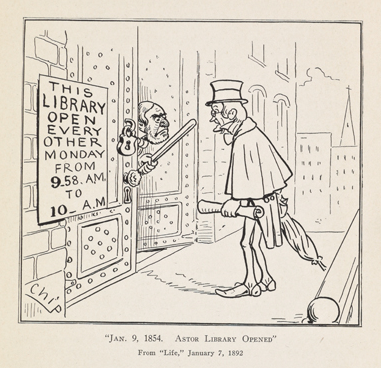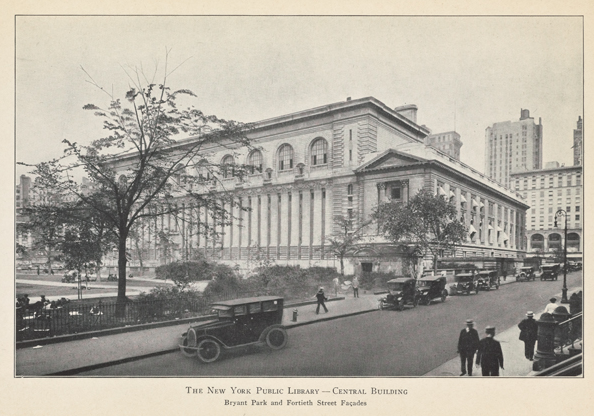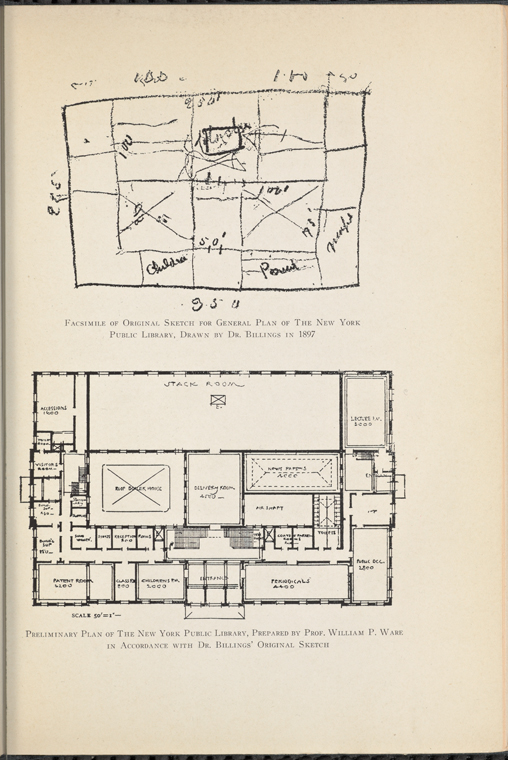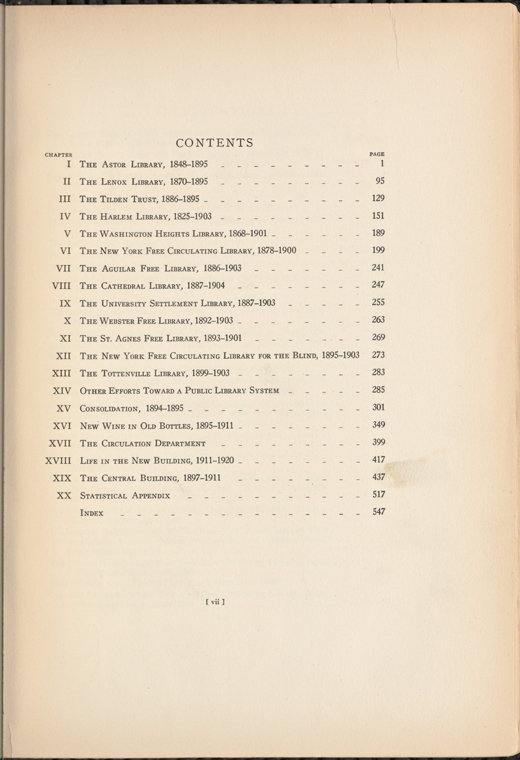A Digitized History of The New York Public Library

In 1923, just 12 years after The New York Public Library opened its flagship building, Harry Miller Lydenberg chronicled a detailed history of the events which sparked NYPL's creation. Lydenberg, then NYPL's Chief Reference Librarian, was to become a future American Library Association President (1932-1933) and NYPL Director (1934-1941) in upcoming years.

The History of the New York Public Library, Astor, Lenox and Tilden Foundations provides a thorough account of 19th century New York City libraries, their consolidation into a unified system, and the construction of NYPL’s central library (now known as the Stephen A. Schwarzman Building).
Prominently discussed are the Astor Library, Lenox Library, and Tilden Trust, among other pre-NYPL libraries. Along with the comprehensive histories of these libraries, readers will find photos, illustrations, personal correspondence, newspaper excerpts, and details of the libraries’ collections and operations.
New York City in the 19th century saw a stark distinction between the popular library (for the people) and the scholar’s library (for the student), with Lydenberg noting that they seemingly belonged to “two irreconcilable categories.” Many libraries’ collections throughout this period did not offer popular reading material and were “likened to the academies of the select and opulent few,” rather than existing for public use.

In the History of the NYPL, Lydenberg features media criticism (including drawings and skits) which illustrate the public's opinion of the city's libraries.
For example, views of the Lenox Library (where visitors needed to apply to the Library Superintendent for admission) were portrayed through an 1884 issue of Life, jesting:
“But I thought you said it was a public library? So I did. Then how can you keep people out? By locking the doors. But why? To keep the pretty books from being spoiled. Why! Who would spoil the pretty books? The public. How? By reading them.”
These views necessitated the creation of a city-wide free public library with collections extensive enough to serve a large metropolitan population of every class and reading ability. The New York Public Library was the result of this demand.
Lydenburg not only presents the need for a city wide public library system, but provides interesting insight into the planning and design of the NYPL—particularly the central building. Readers will travel step-by-step through the construction of the building, from the demolition of the Croton Reservoir (previously the site of the NYPL) to the library’s opening day.
While consolidation of existing libraries began in 1895, the central library did not open its doors until 1911. On its opening day it was observed that the crowd was "so large to defy counting.” Visitors were estimated at 30,000-50,000, with 1,800 registered for library cards by the second day.
Lydenberg also provides insight into the intricacies of the central building’s construction. Primarily the design of the NYPL’s first director, John Shaw Billings, the library's architecture is featured in detail. From designing the reading rooms, to discussing building materials, no detail is spared.

Billings himself even sketched the original plans for the library (seen above), which were used as competition guidelines to select the best design for the building.
Upon the completion of the central library, Lydenberg concluded that the building is a “simple and dignified design, not depending on an over amount of ornamentation, Renaissance in style, based upon classic principles, and modern in character.”
The History of the NYPL's early chapters provide extensive backgrounds of pre-NYPL libraries and details of the libraries’ consolidation. The latter part of the book discusses the decisions considered throughout establishing the library system. Questioning how to classify materials and determining construction logistics are only some of the concerns shared with readers. Appendices offer a wealth of statistics, financial information, and show NYPL’s growth—branches included.
Here is a full list of the book’s contents:
Read E-Books with SimplyE
 With your library card, it's easier than ever to choose from more than 300,000 e-books on SimplyE, The New York Public Library's free e-reader app. Gain access to digital resources for all ages, including e-books, audiobooks, databases, and more.
With your library card, it's easier than ever to choose from more than 300,000 e-books on SimplyE, The New York Public Library's free e-reader app. Gain access to digital resources for all ages, including e-books, audiobooks, databases, and more.
If you don’t have an NYPL library card, New York State residents can apply for a digital card online or through SimplyE (available on the App Store or Google Play).
Need more help? Read our guide to using SimplyE.

